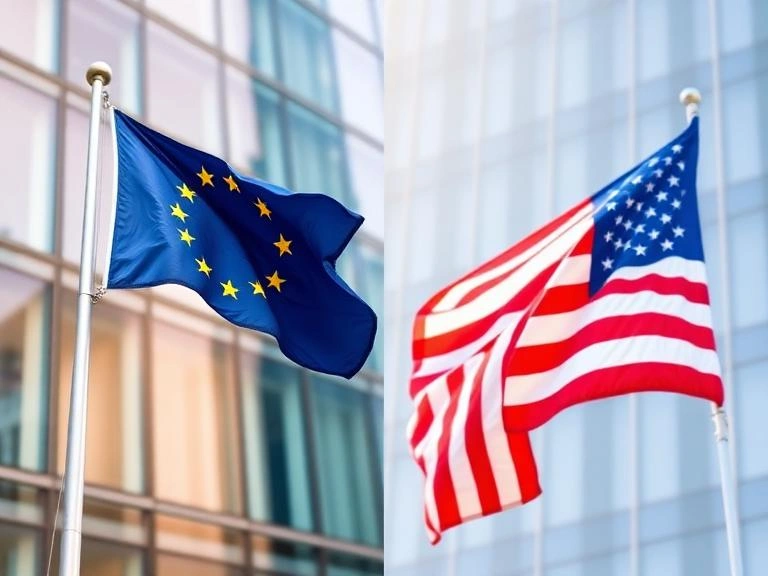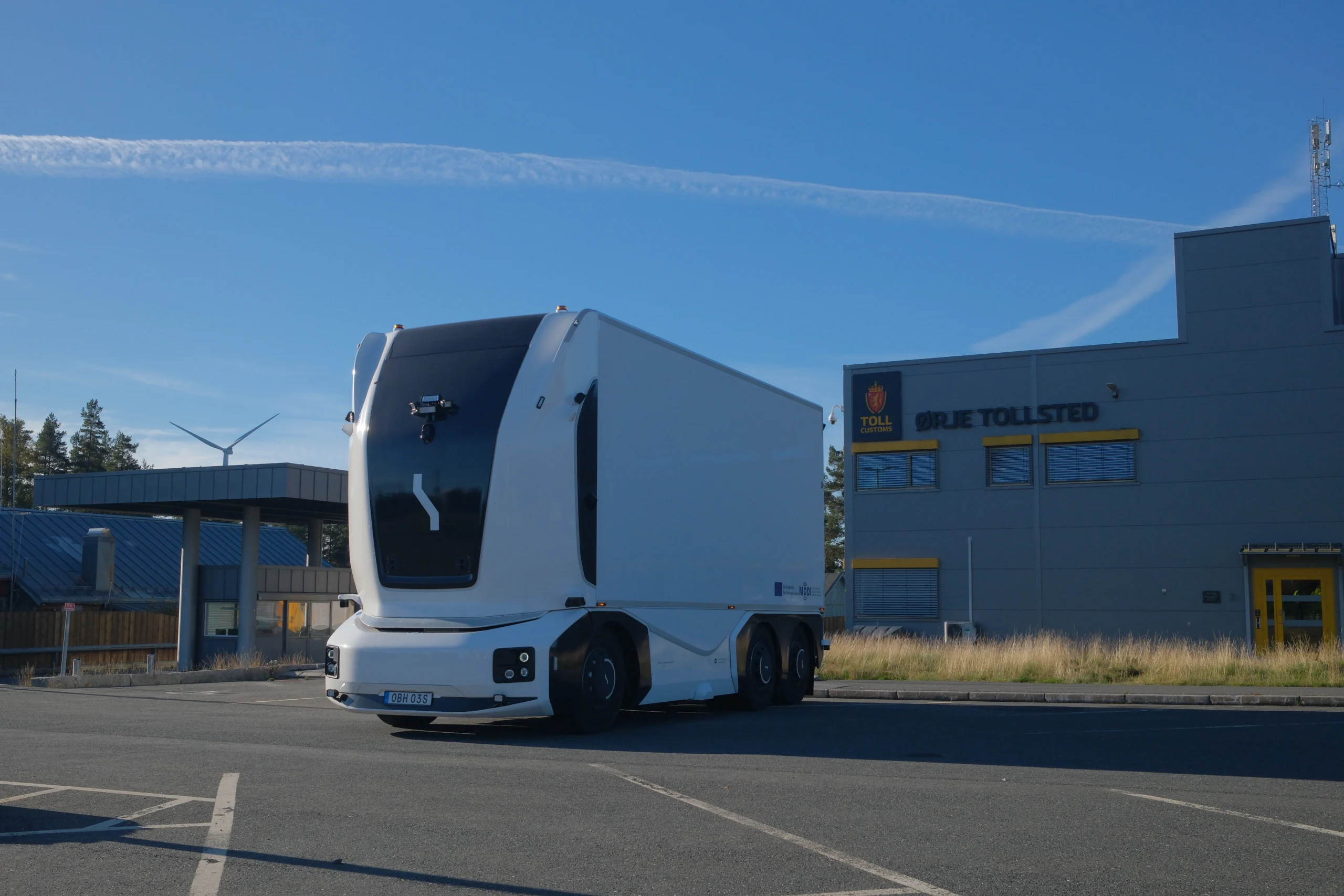Supply chain efficiencies are the fastest route to sustainable e-commerce shipping

John E. Kaye
- Published
- Home, Technology

Rising to the ‘green shipping’ challenge, European e-commerce companies and their logistics partners must combine operational efficiencies with carbon offsetting mechanisms, argues Arnaud Lorant at Asendia
Cross-border e-commerce sales have sky-rocketed since Covid struck, a trend which is expected to have a lasting effect on international supply chain operations. According to Kaleido Intelligence, global international e-commerce spend is set to break the US $1 trillion mark in 2022 and is growing at twice the rate of domestic e-commerce.
Reaching new consumer audiences around the world with fast shipping – namely air freight – takes an environmental toll. European retailers, shippers and parcel operators understand this very well in 2021, and are urgently seeking ways to meet Environmental, Social and Governance (ESG) responsibilities, while running their businesses profitably.
The UN’s ‘Race to Zero’ announced last June, set ambitious carbon-neutral targets for companies and governments to reach by 2050. This November the 26th UN Climate Change Conference, COP26, will be taking place in the UK and is expected to be a regulatory game-changer.
To help ease global warming, what steps can responsible European e-commerce retailers and their logistics partners take to make cross-border e-commerce shipping more sustainable in the coming decades?
Efficiencies make a difference
Building efficiency into logistics and delivery is a logical starting point. This involves working with reputable supply chain and parcel delivery partners, who are fully committed to carbon-reducing goals.
Retailers have made progress in greening their supply chain by reducing packaging waste, investing in electric vehicles, and finding ways to minimise returns. Over time, technology such as AI will prove powerful in making stock predictions more accurate so that retailers can effectively manage their inventory around the globe, and at the same time shorten transit times, and reduce fuel consumption and storage resources.
Meanwhile postal operators and third-party logistics providers (3PLs) are implementing innovative solutions to find the most efficient shipping and delivery routes, and smarter ways of running warehouse operations. For example, one of Asendia’s parent companies, La Poste, now operates the largest electric vehicle fleet in the world, and an estimated 70,000 metric tonnes of CO2 will be avoided by 2025 thanks to the deployment of more efficient bulk storage freight containers for international shipping.
Greener routes for cross-border e-commerce
Freight transportation emissions are expected to grow by 225% by 2050, according to the OECD, so it’s more important than ever for shipping and postal companies to ensure parcels take the most eco-friendly routes. Sustainable aviation fuel (SAF) currently commercially available can reduce GHG emissions by up to 80% on a life-cycle emissions basis as compared to fossil fuels, offering airlines a way to become greener while continuing to fly. Once costs for SAF come down and availability increases, benefits will be seen in the air freight industry.
Meanwhile data analytics, AI and sophisticated planning and forecasting software are being deployed by transport operators. Leading logistics companies are now evaluating shipping routes for ways to reduce fuel consumption, idle time and other wasteful practices that increase carbon dioxide levels.
Future opportunities exist for those brands who collaborate with other retailers to coordinate deliveries to customers via common platforms, enabling products to be transported in bulk and delivered in higher numbers, at a lower environmental cost. While this method may mean slower delivery times, it will appeal to growing numbers of sustainability-conscious online shoppers in the coming years who have realised that faster doesn’t always mean better – and definitely not greener.
Cutting warehouse emissions
There’s an urgent need to develop more warehousing and distribution space in Europe, and the environmental impact of this should be carefully managed. As the total energy demand of warehousing can equal around 25% of related transport emissions, warehouse energy systems must harness technology to reduce consumption. La Poste is making headway here with its commitment to incorporating eco-friendly approaches in its new distribution buildings, to limit energy consumption in the parcel delivery supply chain. This includes responsible rainwater management and investment in photovoltaic (PV) power plants on our sites, to generate renewable energy.
Building greener distribution and warehousing facilities should be a no-brainer for logistics and postal services, as doing so will lead to lower operational costs alongside improved green credentials.
Make slower shopping options attractive
We are seeing growing interest in two-day or three-day delivery, priced appropriately, which will incentivise slower shipping, which in turn reduces emissions. For maximum flexibility in the ecommerce supply chain, Asendia has just launched a new range of international parcel services, the e-PAQ range, so that retailers can meet customers’ exact needs regarding convenience and choice, while cutting their carbon footprint.
Placing inventory closer to customers also drives efficiency. Fulfilment networks are expensive to build, so ambitious brands are partnering with 3PLs to tap into their far-flung fulfilment networks. If fulfilment centres can be strategically located close to customers in target regions, brands have a competitive edge, while also seeing an environmental benefit. When inventory is in the right location, orders can be transported faster and routed more efficiently, all of which will slash costs and carbon footprint.
Carbon offsetting fills the gaps
Operational efficiency cannot totally tackle an e-commerce shipment’s carbon footprint and current technological solutions are still insufficient to reduce it drastically. As a complementary action, carbon offsetting can be used to compensate greenhouse gas (GHG) emissions that aren’t addressed by efficiencies.
This voluntary carbon offsetting mechanism is recognised internationally and relies on robust calculation methodologies and standards. It consists in purchasing carbon credits to finance projects that avoid, reduce, eliminate or sequester carbon elsewhere while providing multiple environmental and social benefits to natural ecosystems and the most vulnerable populations. It also provides businesses with scientific evidence of their carbon action achievements, providing reassurance to clients, and acting as a competitive differentiator in a crowded market.
Through carbon offsetting, Asendia has supported seven wind farm sites in India. It’s an offsetting scheme that provides cleaner energy, and supports local economies. Together the 113 turbines produce enough energy to meet the annual needs of 600,000 people. The wind farm developer gives back a proportion of profits to community projects, including free school meals, health clinics, road maintenance and financial skills workshops. There are also jobs created and support to farmers.
Stakeholders want to see proof that companies are decarbonising their own operations and supply chains as far as possible. It’s accepted that there might then be some emissions that are harder to reduce, and could be offset. For me, the key to making carbon offsets truly meaningful, is to first ensure that the company in question has taken every possible step to green itself from within.
Sign up to The European Newsletter
RECENT ARTICLES
-
 AI innovation linked to a shrinking share of income for European workers
AI innovation linked to a shrinking share of income for European workers -
 Europe emphasises AI governance as North America moves faster towards autonomy, Digitate research shows
Europe emphasises AI governance as North America moves faster towards autonomy, Digitate research shows -
 Surgeons just changed medicine forever using hotel internet connection
Surgeons just changed medicine forever using hotel internet connection -
 Curium’s expansion into transformative therapy offers fresh hope against cancer
Curium’s expansion into transformative therapy offers fresh hope against cancer -
 What to consider before going all in on AI-driven email security
What to consider before going all in on AI-driven email security -
 GrayMatter Robotics opens 100,000-sq-ft AI robotics innovation centre in California
GrayMatter Robotics opens 100,000-sq-ft AI robotics innovation centre in California -
 The silent deal-killer: why cyber due diligence is non-negotiable in M&As
The silent deal-killer: why cyber due diligence is non-negotiable in M&As -
 South African students develop tech concept to tackle hunger using AI and blockchain
South African students develop tech concept to tackle hunger using AI and blockchain -
 Automation breakthrough reduces ambulance delays and saves NHS £800,000 a year
Automation breakthrough reduces ambulance delays and saves NHS £800,000 a year -
 ISF warns of a ‘corporate model’ of cybercrime as criminals outpace business defences
ISF warns of a ‘corporate model’ of cybercrime as criminals outpace business defences -
 New AI breakthrough promises to end ‘drift’ that costs the world trillions
New AI breakthrough promises to end ‘drift’ that costs the world trillions -
 Watch: driverless electric lorry makes history with world’s first border crossing
Watch: driverless electric lorry makes history with world’s first border crossing -
 UK and U.S unveil landmark tech pact with £250bn investment surge
UK and U.S unveil landmark tech pact with £250bn investment surge -
 International Cyber Expo to return to London with global focus on digital security
International Cyber Expo to return to London with global focus on digital security -
 Cybersecurity talent crunch drives double-digit pay rises as UK firms count cost of breaches
Cybersecurity talent crunch drives double-digit pay rises as UK firms count cost of breaches -
 Investors with €39bn AUM gather in Bologna to back Italy’s next tech leaders
Investors with €39bn AUM gather in Bologna to back Italy’s next tech leaders -
 Axians and Nokia expand partnership to strengthen communications infrastructure across EMEA
Axians and Nokia expand partnership to strengthen communications infrastructure across EMEA -
 Forterro buys Spain’s Inology to expand southern Europe footprint
Forterro buys Spain’s Inology to expand southern Europe footprint -
 Singapore student start-up wins $1m Hult Prize for education platform
Singapore student start-up wins $1m Hult Prize for education platform -
 UK businesses increase AI investment despite economic uncertainty, Barclays index finds
UK businesses increase AI investment despite economic uncertainty, Barclays index finds -
 Speed-driven email security: effective tactics for phishing mitigation
Speed-driven email security: effective tactics for phishing mitigation -
 Short circuit: humanoids go for gold at first 'Olympics for robots'
Short circuit: humanoids go for gold at first 'Olympics for robots' -
 New IBM–NASA AI aims to forecast solar flares before they knock out satellites or endanger astronauts
New IBM–NASA AI aims to forecast solar flares before they knock out satellites or endanger astronauts -
 AI is powering the most convincing scams you've ever seen
AI is powering the most convincing scams you've ever seen -
 British firm Skyral to help Mongolia tackle pollution with AI traffic modelling
British firm Skyral to help Mongolia tackle pollution with AI traffic modelling



























